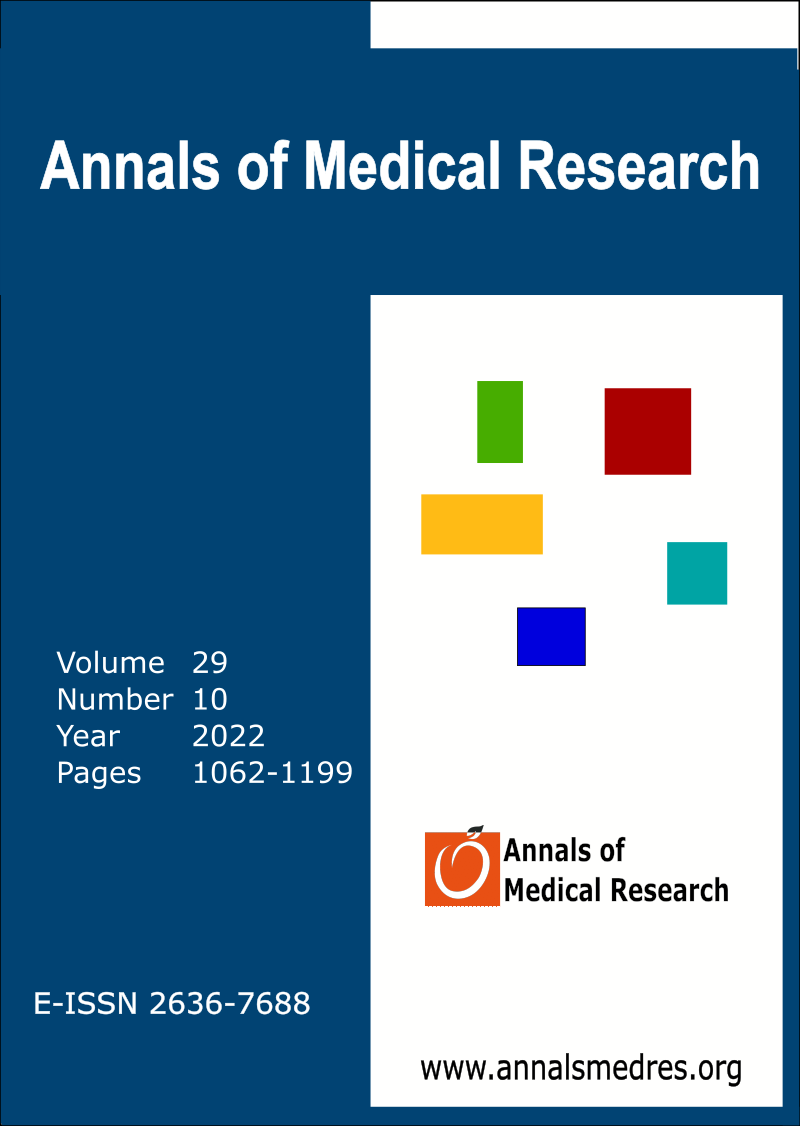Acromegaly and its clinical outcomes: A 10-year retrospective analysis of a cohort of patients with acromegaly from a university setting
Keywords:
Acromegaly, Therapy, Surgery, Radiotherapy, Somatostatin analogsAbstract
Aim: We purpose to evaluate the demographic characteristics of patients with acromegaly, laboratory values when diagnosed and during follow-up, clinical symptoms, comorbid conditions during follow-up, treatment methods, and treatment response rates.
Materials and Methods: Data regarding patients with acromegaly who applied to Karadeniz Technical University Faculty of Medicine Endocrinology and Metabolic Diseases outpatient setting between 2010 and 2020 were included in the study. The patients' demographic characteristics, laboratory values, clinical features when diagnosed and follow-up, and selected treatment methods were examined retrospectively.
Results: A total of 71 patients was eligible, of which 45.1% were female, and 54.9% male. The mean age at diagnosis was 48.5 years. The most common complaint of the patients was an enlargement of the hands and feet (53.5%). In diagnosis, 2.8% of the patients had secondary adrenal insufficiency, 1.4% secondary hypothyroidism, 7% hypogonadism, and 2.8% panhypopituitarism. Pituitary acromegaly was determined in 97.2% of the patients, and non-pituitary acromegaly in 2.8%. Regarding co-morbid conditions, 35.2% of the patients had hypertension, 23.9% had diabetes mellitus (DM), 1.4% had cardiovascular disease, and 5.6% had a malignancy history. Of the patients with pituitary adenoma, 71% had macroadenoma, and 29% had microadenoma. The mean adenoma size was 15.3±7.8 mm. Surgery was the preferred primary treatment in 76.1% of the patients. In 40.8% of the patients only surgical treatment was applied, while in 40.8% surgery+ medical treatment, 8.5% only medical treatment, 5.6% surgery +medical treatment + radiotherapy, 2.8% medical treatment + radiotherapy, 1.4% chemotherapy. After all treatments, 49.3% of the patients were in remission. In the follow-ups, colon malignancy was diagnosed in 4.2% and thyroid malignancy in 5.6%.
Conclusions: The clinical features of patients with acromegaly were generally similar to those in the literature. It was evident that early diagnosis and treatment initiation, and patient response to treatment was the prominent factors decreasing comorbidities.
Downloads
Published
Issue
Section
License
Copyright (c) 2022 The author(s)

This work is licensed under a Creative Commons Attribution-NonCommercial-NoDerivatives 4.0 International License.
CC Attribution-NonCommercial-NoDerivatives 4.0






